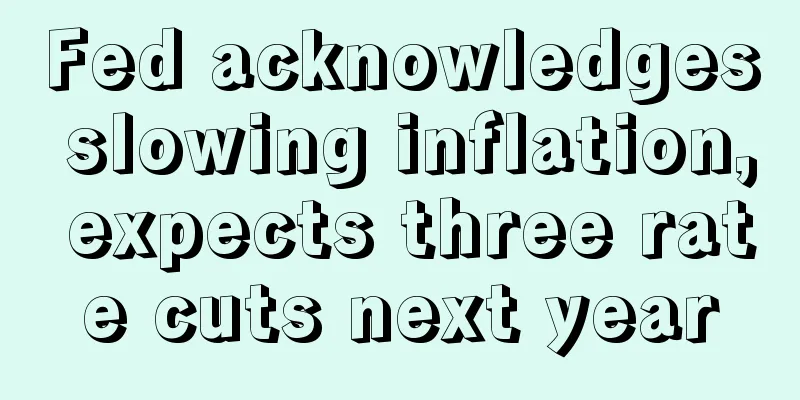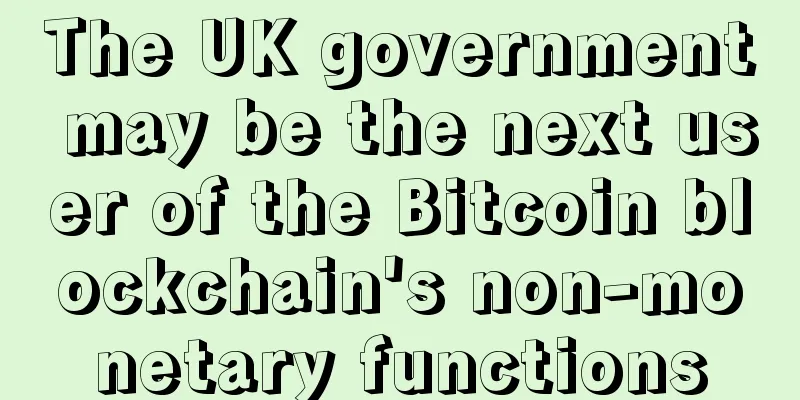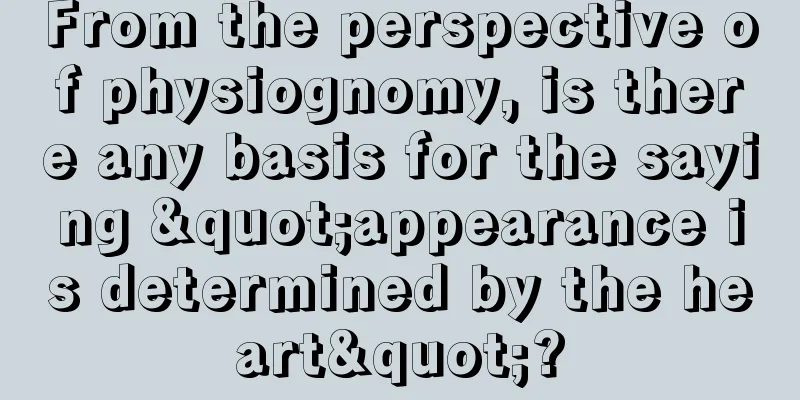Fed acknowledges slowing inflation, expects three rate cuts next year

|
As expected by the market, the Fed has remained on hold since raising interest rates in July. What surprised the market was that the Fed's own interest rate forecast this time released a signal that the monetary stance may turn dovish next year. On Wednesday, December 12, Eastern Time, the Federal Reserve announced after the FOMC meeting of the Monetary Policy Committee that the target range for the federal funds rate remains at 5.25% to 5.50%, continuing to maintain this policy rate at a 22-year high. So far, the Fed has not raised interest rates for three consecutive meetings in this round of tightening cycle since March last year. Like the previous 11 meetings since July last year, this interest rate decision was supported by all FOMC voting members. Previously, the market generally expected that the Fed would not raise interest rates this month, and expectations for the Fed to start cutting interest rates as early as March next year have clearly increased. One day before the Fed announced its decision, even on Tuesday this week when expectations for rate cuts fell after the release of CPI, the CME tool also showed that the futures market expected the probability of the Fed cutting interest rates by at least 25 basis points in March next year to be close to 46%, while the expected probability a month ago was only about 12%. After the announcement of the Fed's decision, Nick Timiraos, a journalist who is regarded as the "Fed's mouthpiece" and known as the "New Fed News Agency," wrote that the Fed will keep interest rates stable, while hinting that inflation is improving faster than expected, opening the door to a rate cut next year. The dot plot shows that more than half of officials expect at least three rate cuts next year, and nearly 30% expect at least four cuts.The dot plot shows that among the 19 Fed officials who provided interest rate forecasts this time, 16 expected the interest rate to fall below 5.0% next year. Among them, five expected the interest rate to be between 4.75% and 5.0%, which is equivalent to two interest rate cuts next year, assuming a 25 basis point cut each time. Six expected it to be between 4.50% and 4.85%, which is equivalent to three interest rate cuts. Four expected the interest rate to be between 4.25% and 4.50%, which is equivalent to four interest rate cuts. One even expected the interest rate to be lower than 4.0%. Based on this calculation, 11 out of 19, or nearly 53%, of the Fed officials expect at least three rate cuts next year, and five, or 26%, expect at least four rate cuts. Compared with the last dot plot in September, the interest rate shift expectations are clearly revealed this time. In September, eight of the 19 people, accounting for 42%, expected the interest rate to be higher than 5.0% next year, of which four expected it to be between 5.0% and 5.25%, and four expected it to be between 5.25% and 5.50%. Among the nine people who expected the interest rate to be lower than 5.0% next year, four expected it to be between 4.75% and 5.0%, three expected it to be between 4.50% and 4.75%, and two expected it to be between 4.25% and 4.5%. By this calculation, only five officials in September expected at least three rate cuts next year, only half the number who made such a forecast this month. The left half of the picture below is the September dot chart, and the second half is the December dot chart. Next year's interest rate is expected to be reduced by 50 basis points, and the interest rate will be reduced by 75 basis points in the next year.The median forecast of interest rates by Fed officials released after the meeting showed that Fed officials lowered their expectations for policy interest rates for this year, next year and the next three years. The specific median forecasts are as follows:
Based on the latest median forecast level, Federal Reserve officials expect that by the end of next year, when the average interest rate reaches 4.65%, there will be a 75 basis point interest rate cut in the next year. Calculated as a 25 basis point cut each time, this will be equivalent to a total of three interest rate cuts next year. This year's GDP growth forecast is raised by 50 basis points, and PCE inflation forecasts for this year, next year and the year after next are loweredThe economic outlook released after the meeting showed that Federal Reserve officials raised their GDP growth forecast for this year, slightly lowered their economic growth forecast for next year, and kept the unemployment rate forecast unchanged for the next three years. They lowered their PCE and core PCE inflation forecasts for the next three years, with this year's forecasts both lowered by 50 basis points. However, it is still expected that inflation will fall back to the Fed's target of 2% in 2026.
New comments: Economic activity slowed down, inflation slowed down over the past yearCompared with the last meeting statement in early November, the main change in this post-meeting resolution statement is the evaluation of the economy and inflation. The last statement said: "Recent indicators show that economic activity expanded at a strong pace in the third quarter." This time it said:
Like all post-meeting statements since May, this statement still considers inflation to be "high", but this time the description of inflation has added an assessment of slowing down, saying that "inflation has slowed over the past year, but remains high." The statement continued the previous assessment of employment, reiterating that job growth has slowed since earlier this year but remains strong, and continued to reiterate that "the unemployment rate remains low." The rate guidance was changed to consider "any" additional tightening required, softening the stance on rate hikesThe Fed's decision this time roughly continued the interest rate guidance of the previous three decisions, and continued to reiterate the sentence added in the July decision: "The (FOMC) Committee will continue to assess new information and its impact on monetary policy." Immediately following this sentence, the Fed made the only change to the guidance of the first four meetings since June, adding the word "any." Some commentators believe that the addition of the word "any" softens the stance of further interest rate hikes. The specific modified statements are as follows:
Reiterated that the tightening of the "financial" environment may affect the economy and inflation and continued to reiterate that the balance sheet reduction is proceeding as plannedThe resolution statement completely copied the last assessment of the financial system. First, it continued to reiterate the statement in March: "The U.S. banking system is sound and resilient." Then, it reiterated that the word "financial" was added to the last statement, reiterating:
Last May, the Federal Reserve announced its plan to reduce its balance sheet (balance sheet reduction), which would see it reducing its bond holdings starting on June 1. Initially, it would reduce its holdings by a maximum of $30 billion in U.S. Treasuries and $17.5 billion in agency mortgage-backed securities (MBS) per month. Three months later, the maximum monthly reduction would double. Like the previous 11 meetings, the statement of this meeting did not announce a new route, but continued to reiterate that it would continue to reduce its holdings of Treasury bonds, agency bonds and agency MBS according to the previously announced plan. The red text below shows the deletions and additions to this resolution statement compared to the previous one. |
>>: JPMorgan: Ethereum could outperform Bitcoin next year
Recommend
What is the fate of a person with a mole on the chest?
In physiognomy, people with moles on their chest ...
Analyzing work attitude from eyes
In physiognomy, eyes are the windows to the soul,...
What is the fate of a woman with a bulbous nose?
If a woman has a bulbous nose, will her fate be b...
People with crescent-shaped foreheads will never have bad luck.
The crescent pattern is a pattern of three or fou...
What are the facial features that indicate continuous happiness in 2020?
People feel refreshed when happy things happen to...
Is it good to start the destiny line from the wisdom line?
Everyone is very familiar with the fate line, whi...
What does a mole near a woman’s ear mean for her fate?
One of the factors that influence numerology is t...
How to find out if a woman is having an affair
When the night is long and there is no one around...
Coin Zone Trends: Bitcoin Price Trends Based on Big Data This Week (2017-06-28)
The price of the currency continues to be under p...
What is the fortune of men with hair loss at a young age?
With the development of the times, people now hav...
The big cake rebounded in a deep V, and the mid-term bottom has appeared
Author | Hashipi Analysis Team...
The shape of your buttocks can tell whether you are a good wife and good fortune
The shape of your buttocks can tell whether you a...
How to see a woman with a flirtatious face
Today's society is bizarre and there are all ...
Bitcoin breaks through $55,000 for the first time since February 22
Bitcoin breaks through $55,000 for the first time...
Single but not lonely
Sometimes, people easily feel lonely and helpless...









